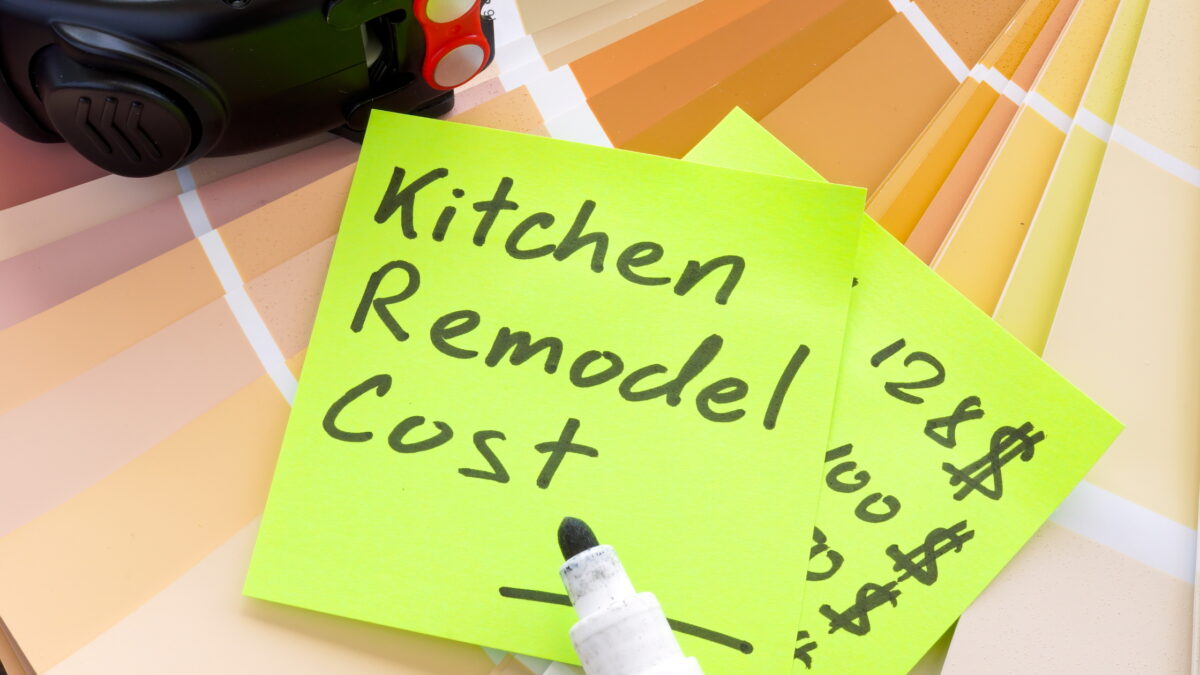Plan your outdoor kitchen by taking into account these 11 essential considerations. Explore tips on budgeting, layout, construction options, and safety measures to design a functional and stylish outdoor space.
1. Budget
Before diving into designing your outdoor kitchen, the first crucial step is to consider your budget. The cost of designing an outdoor kitchen varies widely, influenced by factors such as the features you desire, the location, materials, labor costs, and more. On the budget-friendly end, constructing an outdoor kitchen can start at $5,000, while a high-end luxury setup may exceed $30,000, with a wide range of options in between. It’s always a smart move to allocate funds for any unforeseen expenses that might pop up during the project.
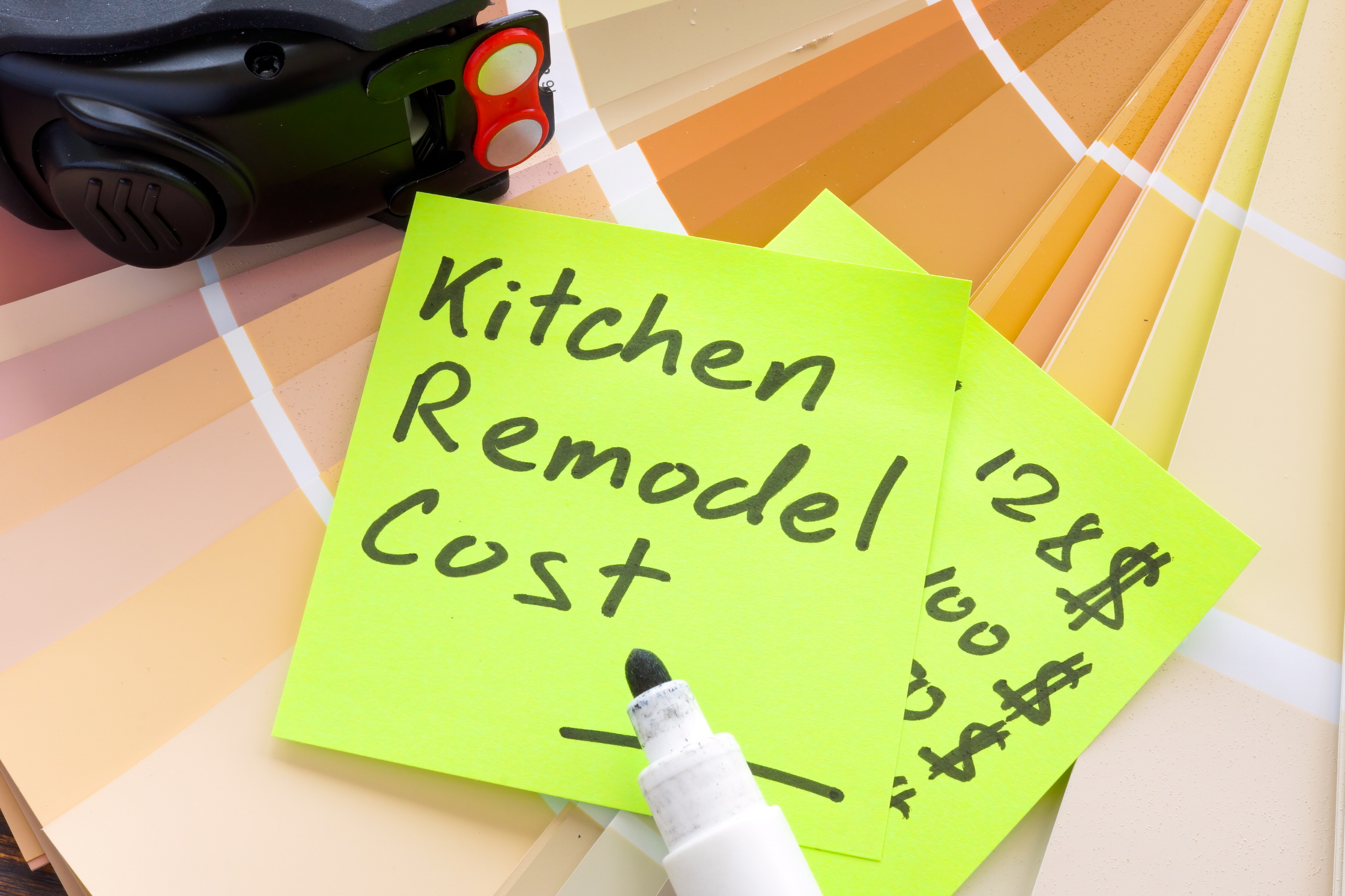
If the design you envision is currently beyond your budget, think about where you might compromise on features or plan a layout that allows for future expansions. This approach enables you to enjoy your outdoor kitchen now while giving you the flexibility to enhance it as additional funding becomes available, gradually bringing your dream kitchen to life. When planning your budget, several key elements need to be taken into account, which we’ll explore further below.
2. Functionality
Before plunging into a comprehensive outdoor kitchen renovation, it’s important to identify your primary objectives for the space. Are you an ardent cook? If so, investing in premium appliances, a functional sink, and ample countertop space might be your priority. On the other hand, if you’re keen on hosting gatherings, you would likely focus on ample bar seating, comfortable dining regions, and appliances that facilitate effortless entertaining. Knowing what you want to achieve with your outdoor kitchen will guide your planning and investment decisions.

3. Design Options
When planning your outdoor kitchen design, there are several fundamental elements to contemplate. First and foremost, don’t overlook the addition of storage space. This often-forgotten aspect is critical to the functionality of your outdoor kitchen. To avoid frequent trips back into the house, ensure there’s ample room to store cooking utensils, dishware, and tools needed for managing food and drinks.
Subsequently, counter space must be a priority in your plan. For those who intend to cook and entertain outdoors regularly, sufficient countertop space is essential for food preparation, setting down prepared meals and beverages, and ensuring guests can dine and unwind comfortably. Neglecting to allocate enough countertop area during the layout phase could compromise the overall efficiency and enjoyment of your kitchen.
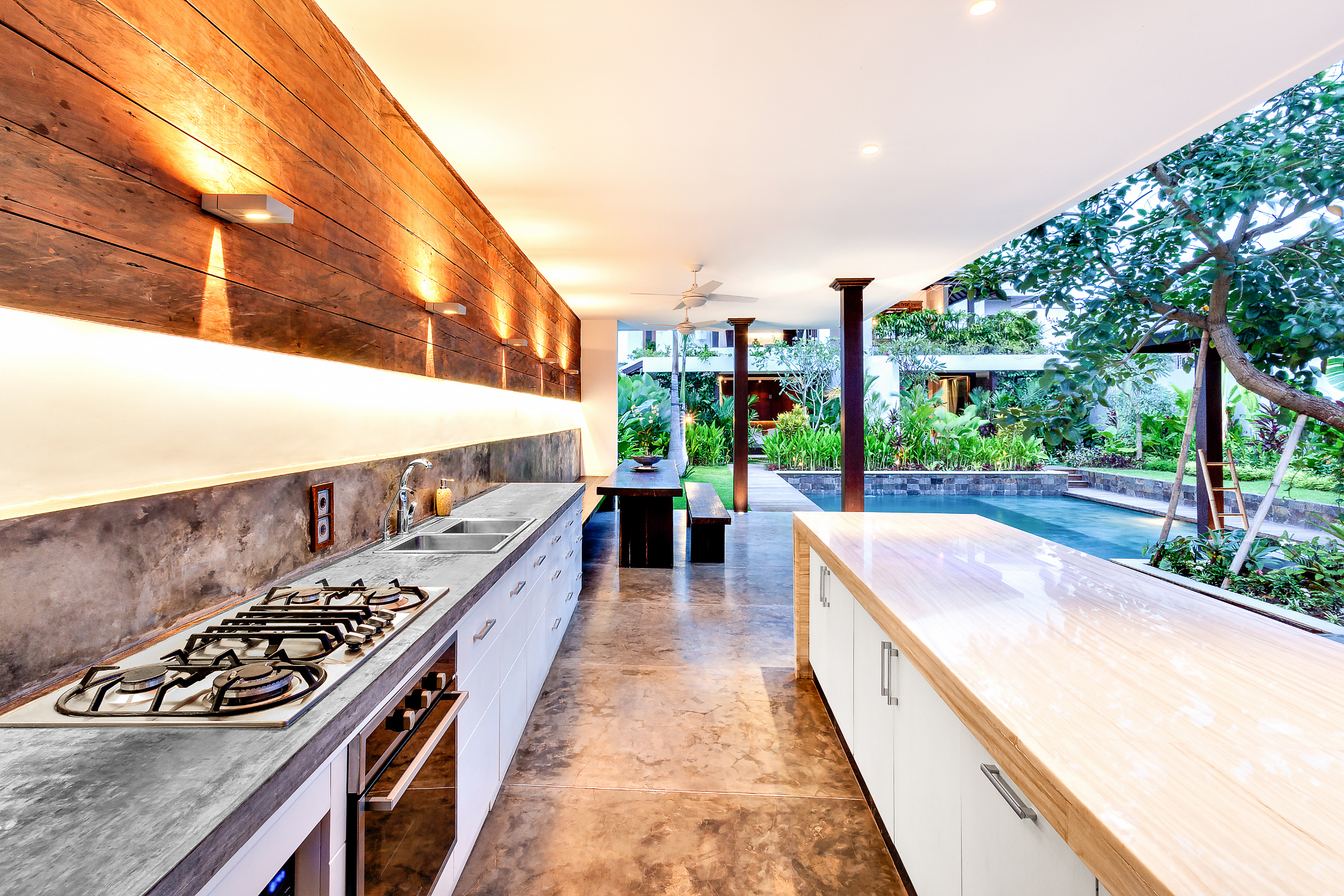
Lastly, the size of the grill you select is crucial. If your plans involve cooking for large groups or preparing a wide variety of foods, a larger grill is necessary. Remember, the size and functionality of your space may dictate compromises elsewhere in your design, such as possibly reducing counter area to accommodate a larger grill.
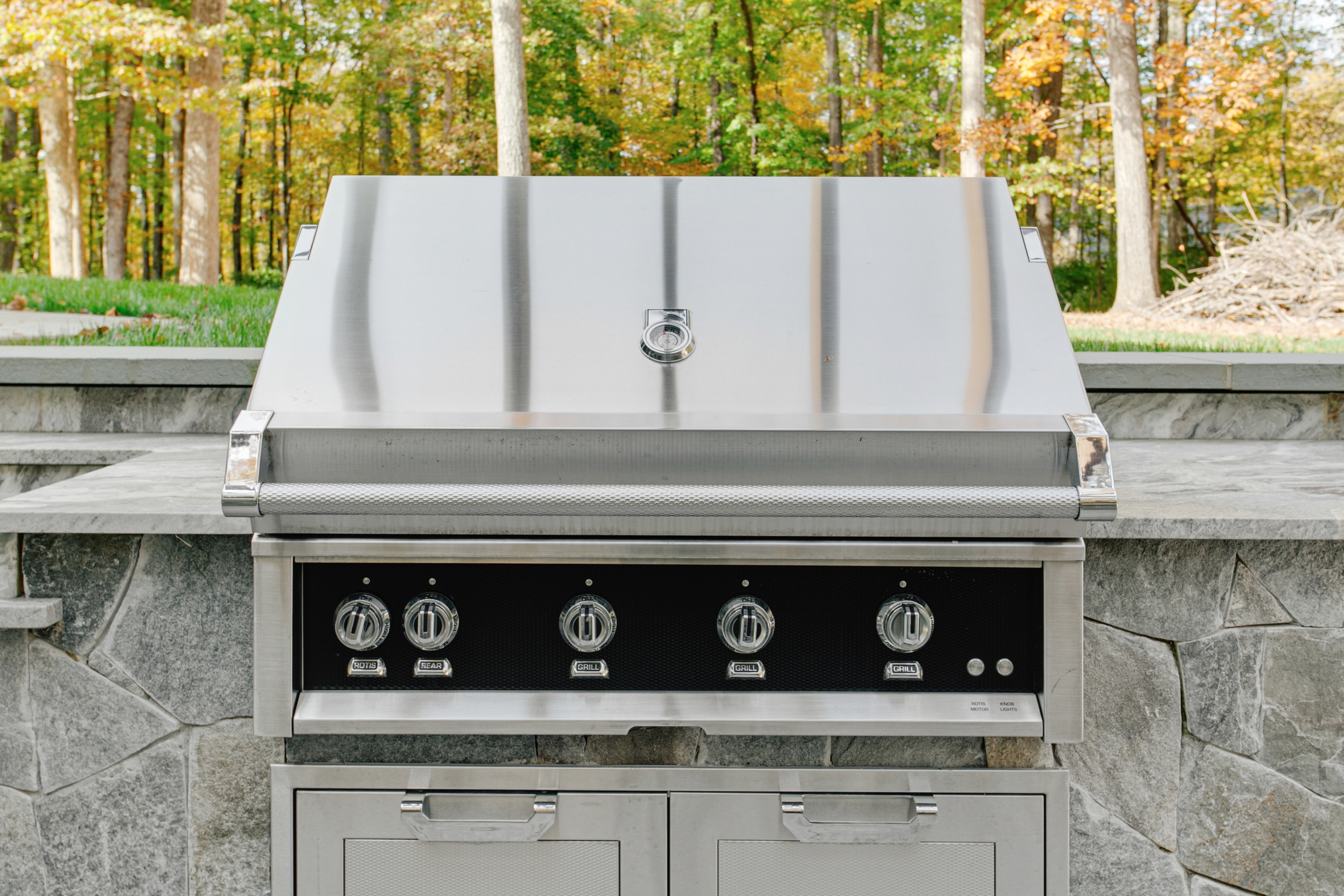
4. Layouts
When considering your outdoor kitchen, choosing the right layout is crucial as it influences functionality and how you’ll interact with the space.
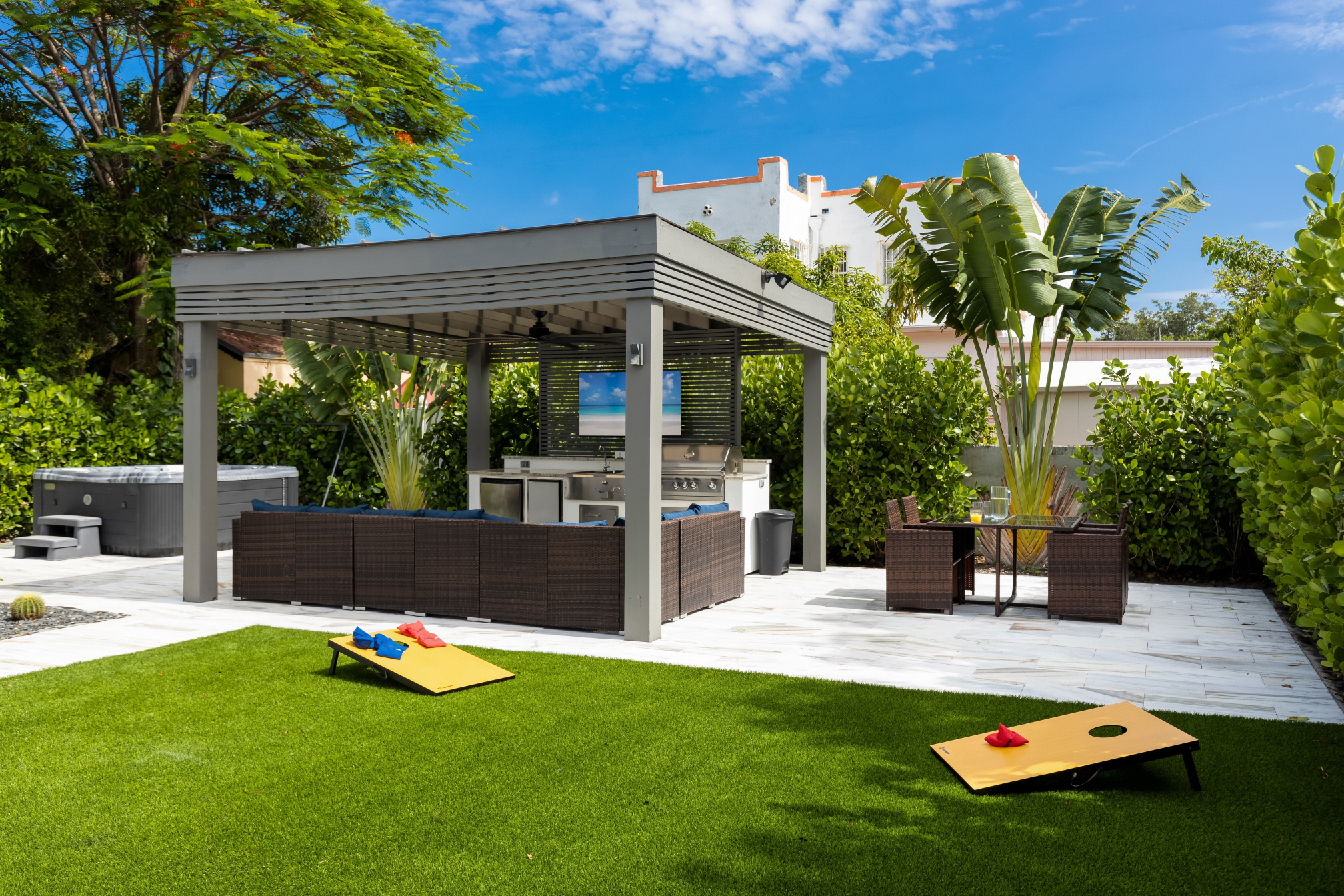
The classic U-shaped, or horseshoe, kitchen layout is a popular option, featuring three walls connected by counters and cabinets. This configuration provides an abundance of counter and cabinet space, allowing multiple people to cook simultaneously without feeling cramped. Additionally, the U-shape clearly delineates the kitchen area from the rest of the backyard, which might be aesthetically pleasing depending on your overall outdoor design.
Another option is the L-shaped kitchen layout, characterized by two adjoining walls of counters and cabinets. Renowned for their practicality, L-shaped kitchens maximize functional counter space without monopolizing the floor area, making them a smart choice for open-plan outdoor spaces. This layout facilitates interaction and provides plenty of seating without segregating the kitchen from the rest of the yard.
Lastly, the single-wall kitchen layout is an efficient alternative, consolidating counters, cabinets, and appliances along one wall or in a single row of cabinetry. Ideal for maximizing space in smaller backyards, this layout minimizes the kitchen footprint and is generally the most cost-effective renovation option, offering simplicity without compromising on functionality.
5. Location
The location of your outdoor kitchen is a pivotal decision that will affect everything from the project’s budget to its layout. Begin by assessing the current state of your outdoor space. Questions to consider include whether you need to level the ground for construction, if you’re working within a constrained area due to existing structures or the landscape, or if you’re planning to build the kitchen on an existing deck.
Next, think about how the outdoor kitchen will blend with your backyard’s existing amenities. Placing the kitchen close to a firepit can enhance your hosting capabilities, offering a cozy spot for guests to gather. Alternatively, positioning it near the pool can streamline the process of serving refreshments, allowing for effortless entertainment of poolside guests.
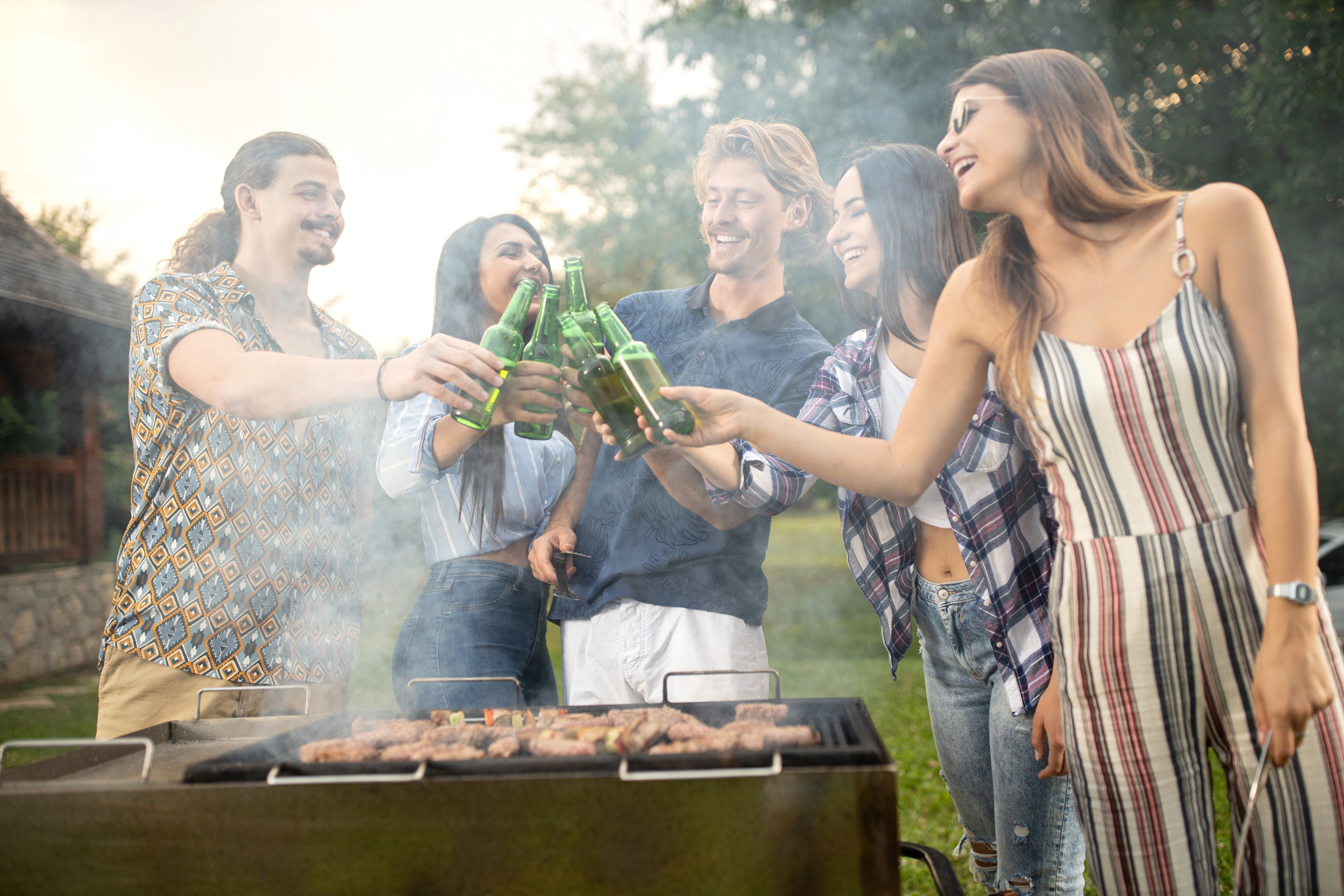
Lastly, consider the kitchen’s proximity to your home. Choosing between a satellite kitchen, which is set away from the house, and a perimeter kitchen, located directly adjacent to your home, has significant implications. Opting for a perimeter kitchen can be a cost-effective solution as it allows for easier access to indoor facilities like the sink and refrigerator, and it typically involves lower expenses for extending utility lines.
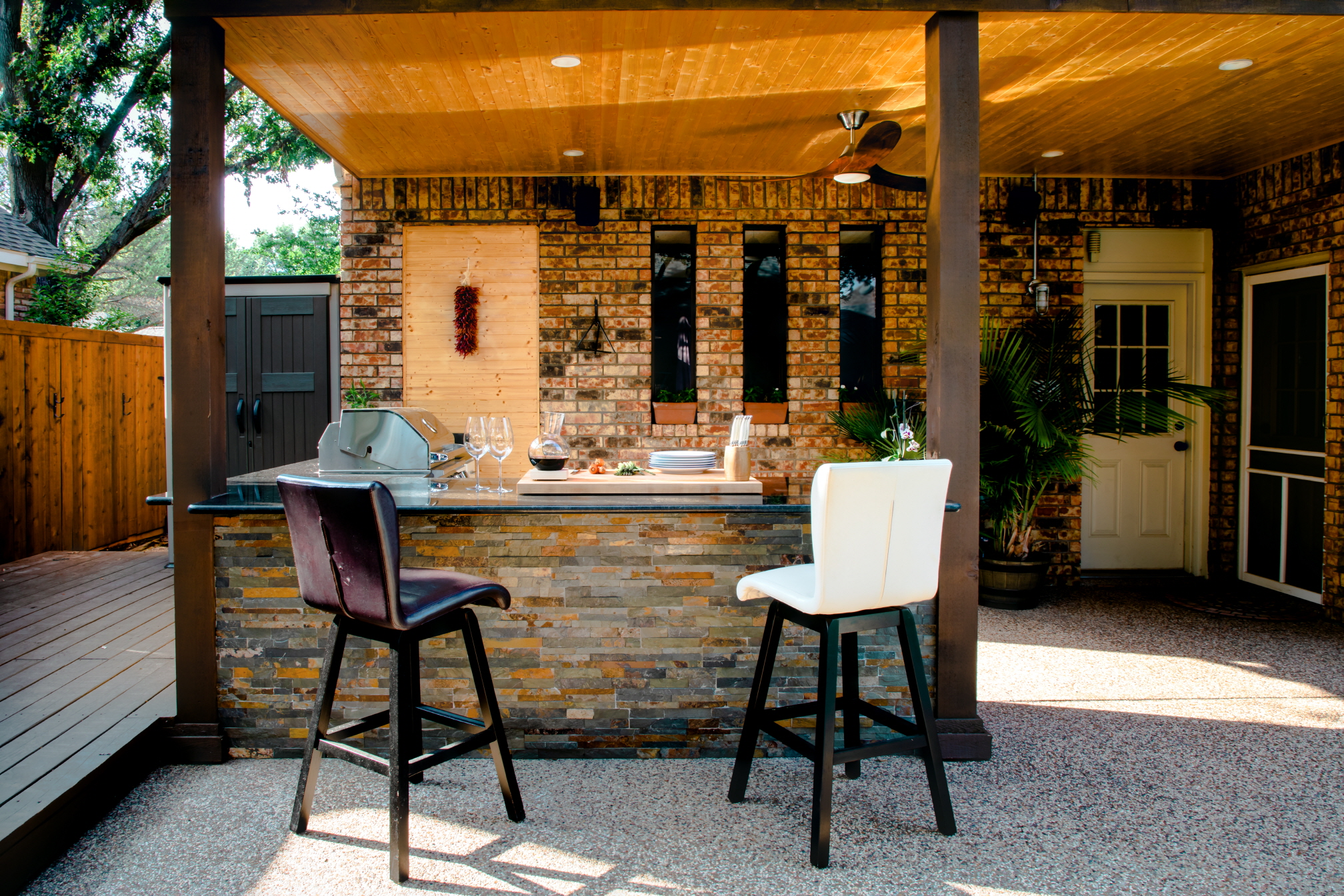
6. Utilities
Selecting the right utilities is a crucial step in designing your outdoor kitchen, and it greatly depends on your goals for the space and budget considerations. It’s important to note that you will need to work with a contractor for utility installation, which involves additional labor costs. Below, we explore the benefits and costs associated with key utilities:
Water
While not essential, having running water in your outdoor kitchen is a luxury that can greatly enhance convenience, especially in satellite kitchens or if you frequently prepare meals outdoors. The cost typically ranges from $500 to $2,000. Without a sink, you’ll need to handle food washing, prep, and cleanup indoors, but installing a sink can significantly streamline these tasks.
Electricity
Electricity installation ranges from $300 to $1,000 and can transform how you utilize your outdoor kitchen. It allows for the use of various appliances such as outdoor refrigerators, blenders, air fryers, and coffee machines, reducing the need to go back and forth to the house. Furthermore, electrical lighting can extend the usability of your kitchen into the evening, making it perfect for parties or late-night gatherings. However, opting for non-electric alternatives like a drop-in ice cooler is a viable option, though it may limit the kitchen’s functionality.
Gas
The cost of installing a gas line is generally $15-$25 per foot. Gas is an excellent choice if you prefer cooking with a traditional stove, as many people find that nothing matches the taste and control of cooking over a flame compared to an electric stovetop. If you’re looking to cut costs, consider using a propane tank with a gas grill as an alternative to running a gas line. This option can still provide the benefits of gas cooking without the higher installation expense.
7. DIY or Professionals
Considering a DIY approach for your outdoor kitchen build can lead to significant savings. This hands-on strategy enables you to allocate more of your budget towards premium appliances or bespoke details. Here’s a breakdown of various DIY avenues to explore:
On the flip side, partnering with professional contractors delivers a host of advantages for certain aspects—or the entirety—of your kitchen project. Contractors bring expert craftsmanship, ensuring that installations of utilities, appliances, and finishes are done both correctly and safely. With their specialized skills, achieving a desired aesthetic that might be challenging to replicate on your own becomes feasible. Moreover, professionals offer valuable advice on material choices based on their extensive experience. Keep in mind, though, that involving contractors could lead to a longer project timeline.
8. Construction Options
Embarking on a DIY construction of your outdoor kitchen requires you to be honest about your abilities and what you can achieve without compromising safety. Here are the options you have at your disposal:
Building
One approach is to build your kitchen from the ground up, tackling everything including the frame. Popular materials for outdoor kitchen frames consist of wood, concrete blocks, brick masonry, and steel. If you’ve got construction experience, this can be a cost-effective choice; otherwise, it’s best to steer clear.
Do keep in mind, however, that using concrete blocks or bricks necessitates a sturdy foundation. This will often involve hiring contractors to lay a concrete slab or footing capable of supporting your kitchen’s structure. If you’re considering a concrete frame, remember it cannot simply be placed on existing structures like decks or patios, which might limit your design based on the layout of your backyard.
Installing
An alternative is opting for a pre-designed installation system. These kits come with a frame and pre-built cabinets ready for assembly. Your responsibility would then be to integrate appliances and countertops. While this still demands some design savvy—particularly if engaging with materials like tile or stucco—it offers a nice balance for those who like DIY projects but desire a bit of a head start.
Assembling
The simplest and safest DIY choice is a ready-to-assemble outdoor kitchen. You would select a set from a manufacturer, which then arrives with all the necessary components pre-made, awaiting assembly. This method is user-friendly and may even offer custom features depending on the manufacturer chosen. It’s perfect for those wanting a streamlined process with a touch of personalization.
9. Kitchen Amenities
When dreaming up your perfect outdoor kitchen, it’s essential to think about the amenities you’d like to include to create a space that’s as functional as it is inviting. Below are some popular features to consider:
Bar
A fantastic way to make your outdoor kitchen the heart of entertainment is by installing a bar. Incorporating a bar countertop into your U-shaped or L-shaped layout not only provides a spot for guests to gather but also enhances the overall experience. Protect your bar area from the elements with a large umbrella or a standalone awning. For those with space limitations, a fold-out countertop offers a flexible solution, allowing you to free up space when it’s not in use.
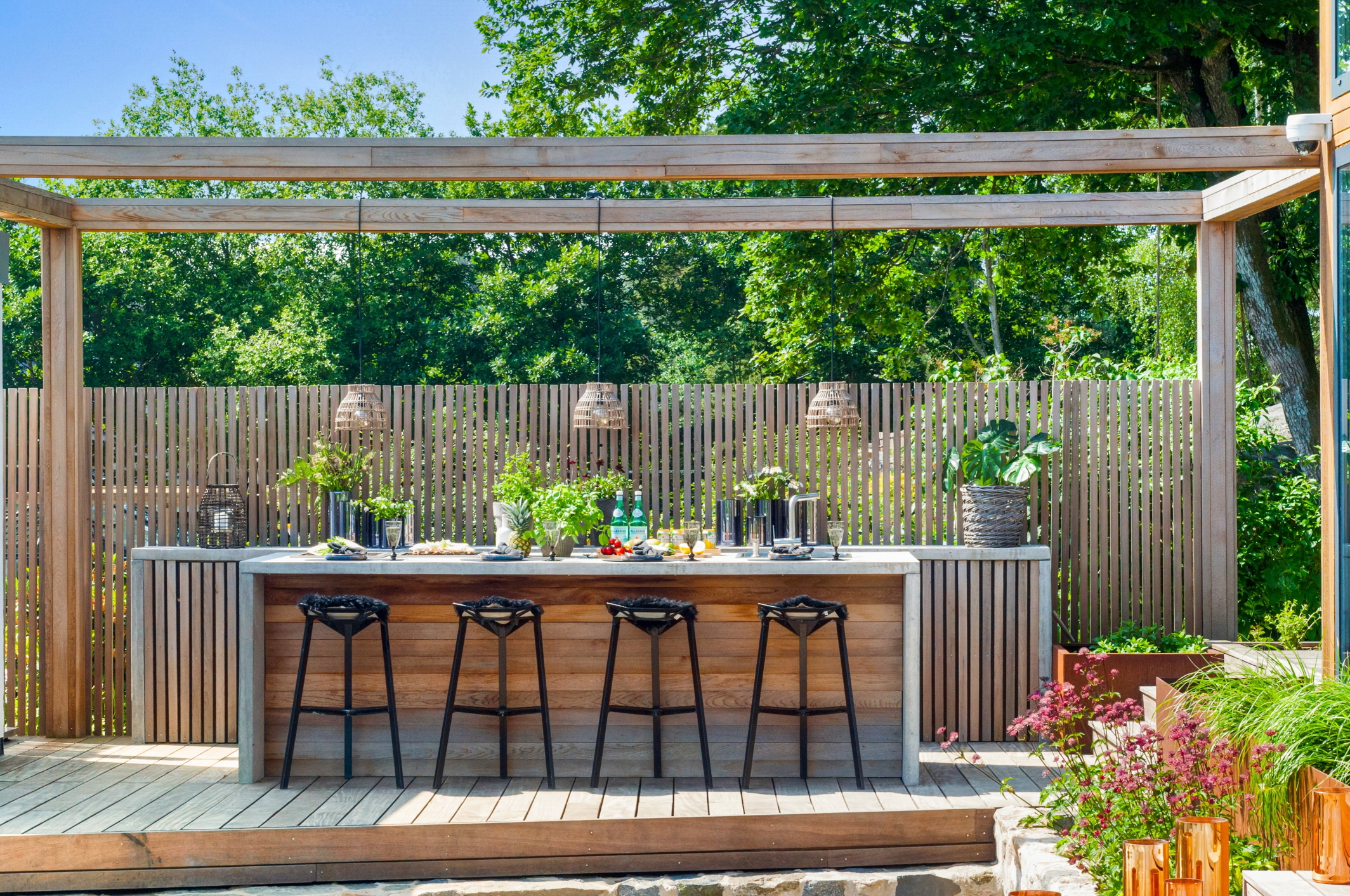
Lighting
Good lighting is the finishing touch that elevates your outdoor kitchen from good to great. Task lighting over countertops, stoves, and bars makes meal prep and dining a breeze. For ambiance, incorporate under-cabinet LED lighting in a soft, warm hue, and don’t hesitate to drape string lights around your seating area to create a cozy, inviting environment.
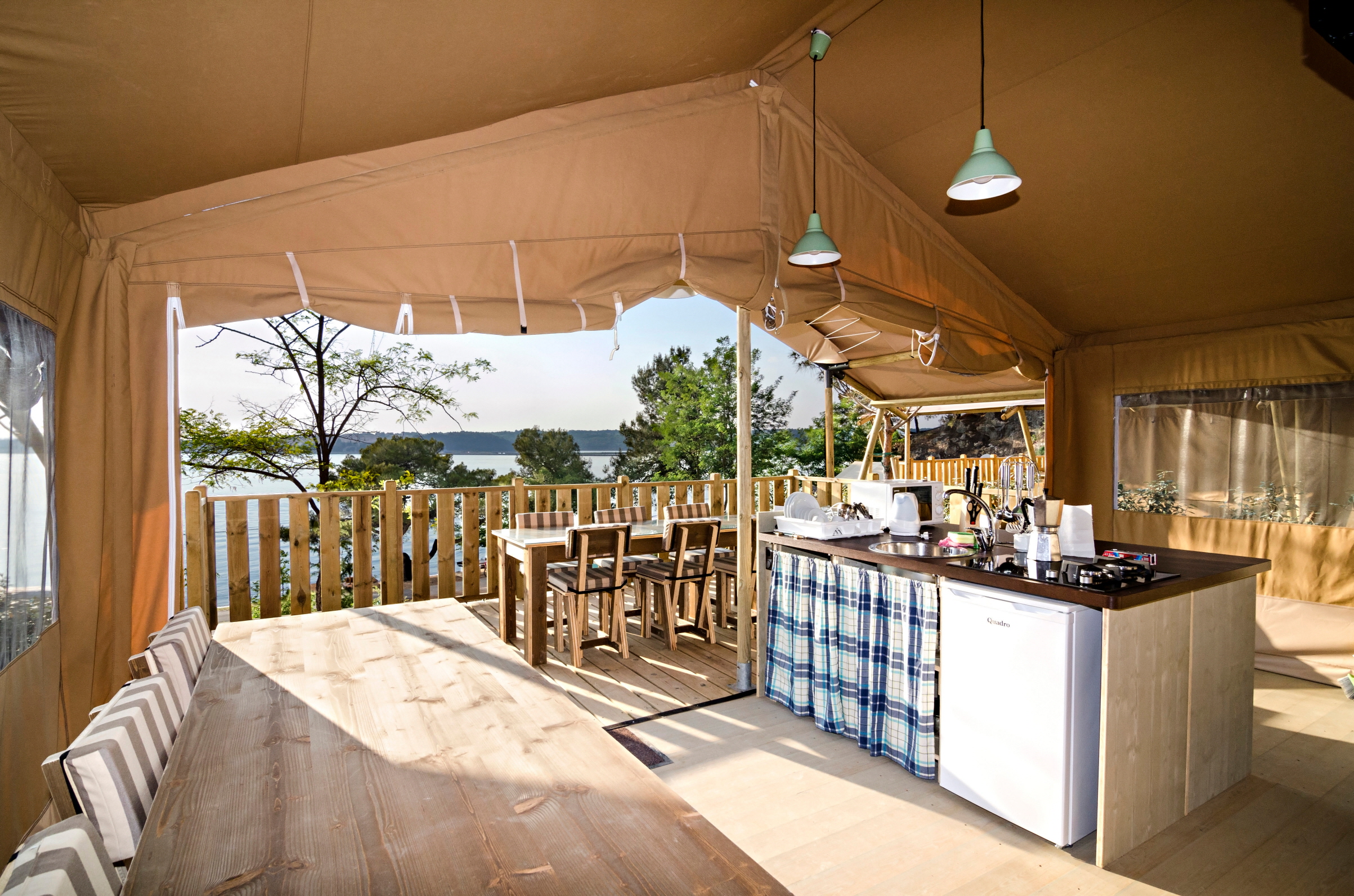
Seating
Choosing the right seating can significantly impact the comfort and style of your outdoor kitchen. For a modern industrial look, sleek metal stools that slide under your bar counter or kitchen island are a chic choice. If comfort tops your list, opt for high-top chairs in wood or wicker, and make them even more inviting with seasonal cushions and pillows. Consider expanding your seating options by adding a lounge zone with an outdoor sofa, chairs, and a center table for a more relaxed setting.
Storage
Functionality is key in any kitchen, and outdoor kitchens are no exception. Incorporating ample storage solutions ensures that your cooking essentials are within reach. Under-counter cabinets offer considerable space for tools and utensils. A permanent kitchen island can significantly increase your storage and workspace, but if square footage is at a premium, get innovative with pull-out spice racks, modular storage benches, or floating shelves on an adjacent wall or fence. These creative solutions can help you maximize your outdoor kitchen’s functionality, regardless of its size.
10. Durability
Selecting the right materials is critical for your outdoor kitchen renovation, especially with durability in mind. The framing material forms the foundation of your outdoor kitchen, supporting countertops, appliances, and cabinets. For heavy appliances like grills or ovens, choosing a robust framing material such as steel, concrete, or brick is essential, as these can bear substantial weight. In areas prone to natural disasters like earthquakes or tornadoes, steel or concrete blocks are preferable to wood for their added resilience.
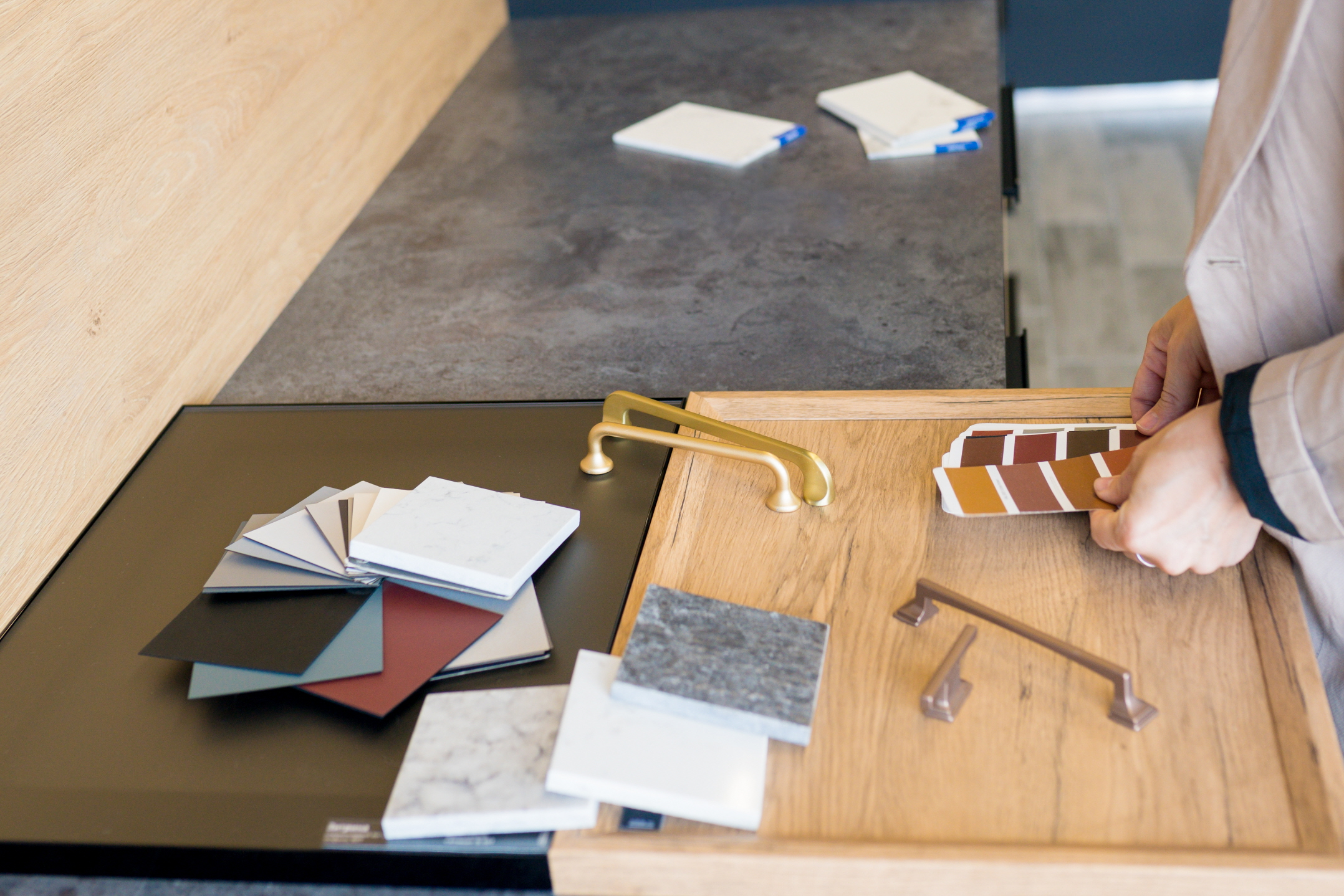
The climate of your location also plays a significant role in material selection. Kitchens in areas with harsh weather conditions, such as extreme temperatures, heavy rainfall, or high moisture levels—common in coastal regions—require materials designed to withstand these elements. Metal frames, while sturdy, are susceptible to rust and corrosion in humid or salty air, and wood is vulnerable to rot or structural damage. For kitchens where weather resistance is paramount, consider using concrete blocks or bricks. Bricks, in particular, offer excellent resistance to freeze-thaw cycles, making them an ideal choice for climates with severe winters.
11. Safety
Ensuring safety is a crucial step you shouldn’t overlook in your outdoor kitchen renovation, particularly when it comes to fire hazards. When using wooden frames and cabinetry, it’s important to address the combustibility of the material. To mitigate this risk, installing insulated jackets under heat-generating appliances like gas stoves is a prudent measure. Additionally, using pressure-treated wood can offer some resistance against localized heat sources. Another effective strategy is to line both the interior and exterior of your wooden structures with cement backer board, which not only shields against heat but also provides an added layer of protection from water damage. If you’re collaborating with contractors for your renovation, ensure they are implementing these essential fireproofing measures to safeguard your outdoor kitchen.

